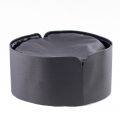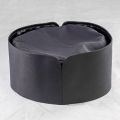This website uses cookies to ensure you get the best experience on our website. Read more
Caring for Your Vestments and Making Them Last Longer
 27Mar
27MarWe are pleased to present our first post in a series on caring for church vestments. We asked nun Agrippina — who has spent more than a decade in her obedience in our monastic vestry room — to share with us her experience and secrets of her trade. For the clergy, vestments are a must-have. Unlike mass-produced items, most vestments are tailor-made and therefore expensive. However, they may also gather dust and dirt, like any other garment. Removing stains is not an easy process because of the fabric properties, design and other factors. It is also unavoidable and accelerates wear and tear. Improper washing — and storage — can damage the fabric and cause the item to deform, so it is wise to delay the washing in every possible way for as long as possible. And that is not idle talk, but our hard-earned experience. Let me now share with you some secrets of our trade.
1. Hang the vestments properly
Our visit to a theatre begins with the cloakroom, and in the vestry room, it starts with the rack or wardrobe. It is not a good idea to fold your vestments and stack them up on a shelf.

A hanger we use for sticharia. Thick bar protects the orarion from creases
It is always best to hang them. For your sticharion, use a durable hanger with shoulder flares that extends to the point where the shoulder meets the sleeve. Short and narrow hangers will cause the fabric to extend around the collar. A narrow hanger may bend or break under the weight of your garment. For a deacon's vestment, choose a hanger with a thick bar to protect the orarion from forming visible creases at the folds.
For Russian-style phelonions, you will need a different type of hanger. These hangers are available for purchase, but you might be much better off if a parishioner with a clever pair of hands volunteered to make one, you are lucky enough to find one. The hanger is fairly easy to make and is very good to have. Here is one small but important detail to bear in mind: the shape of the hanger must be close to a full triangle. If the summit is too flat, the base of your chasuble may break eventually.
 The Hanger for Vestments at catalog.obitel-minsk.com
The Hanger for Vestments at catalog.obitel-minsk.com
2. Using protective cover
Inevitably, your garment will collect dust. In smaller churches, where vestry rooms can be very close to the altar, some of the dust may come from the censor. Accidental stains can also be a problem.
You can protect your garment by putting it in a protective bag.

A garment cover for priest vesments. At least 100cm (approx.39in) wide needed
However, where the space on the rack is limited, one garment may rub against the other, especially the parts near the rack. That mostly happens when you take your garment off the rack and or hang it back on. Lints and puffs may form as a result, and the laces may wear down. Sticharia are the most at risk, but the damage may also occur to the fine embroidery on the chasubles.
To minimise all these risks, we use light protective bags for the chasuble and sticharia, especially when they are not in use. In principle, it would also be appropriate to cover a clergy garment with a piece of thick cloth. Protecting the vestments in transit is another good reason for using covers.
 Garment Cover at catalog.obitel-minsk.com
Garment Cover at catalog.obitel-minsk.com
3. Wardrobe or rack?
There must be a space of at least five centimetres between the garment and the walls of a wardrobe. Yet, when short of space, owners often hand their vestments diagonally. The garments come into contact with the hard walls of the wardrobe and become damaged, even when placed in a dust bag.
4. Fresh stains
Ideally, you should remove a fresh stain as soon as possible. Stains become persistent with time. Also, it is easier to remove it while you still remember what caused it and can choose the appropriate method. Furthermore, you will avoid unpleasant situations when you need the vestment at this moment, but there is a visible stain that you cannot remove quickly.

























